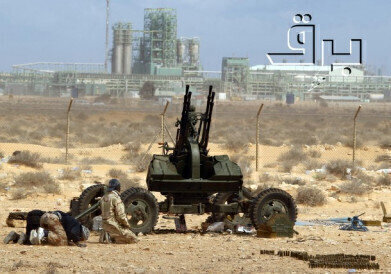Fuel for thought
Isis Turns Militants on Libya Oil Towns
Jan 09 2016
Conflict in North Africa has disrupted countless lives and caused shocking fatalities. Now, Isis is targeting Libyan oil towns in an attempt to seize control over major production terminals. The conflict has led to the death of two soldiers in al-Sidra, as well as a 420,000 barrel Ras Lanouf fuel tank being set on fire. The jihadi used a suicide bomb to blow up a car at a military check point, followed by a botched attack on Ras Lanouf. While the initial onslaught was brutal, the Islamic State militants were quickly pushed back.
“We were attacked by a convoy of a dozen vehicles belonging to Isis,” reveals Bashir Boudhfira, a colonel in the army that serves the internationally recognised government. “They then launched an attack on the town of Ras Lanouf via the south but did not manage to enter.”
In the wake of the conflict, Isis used its Twitter account to describe the assault as an “attack on the al-Sidra area followed by violent clashes with the enemies of God.”
Isis attempts to seize ‘oil crescent’
Isis has had its sights set on taking Libya’s ‘oil crescent’ for months, with key sites such as al-Sidra and Ras Lanouf on their radar. As oil is Libya’s core natural resource, seizing control over production facilities would give Isis a huge amount of power. Yet clashes have already threatened its profitability, with current output dropping dramatically from pre-revolt levels. While in the past Libya produced 1.6 million barrels a day, unrest has caused production to drop significantly.
In the hope of putting an end to the Isis terror regime and saving Libya’s oil economy, the UN is pushing for a power-sharing agreement that would see the nation ruled by a unity government. Until stability is restored, Libya’s oil reserves will continue to be at risk of seizure from the Islamic State of Iraq.
Regardless of who controls oil output, all crude must comply with Tier III Gasoline Regulations. For more information on the new standards, ‘Tier III Gasoline Regulations on the Horizon’ offers readers plenty of insight. The new requirements have been criticised for being overly complex, despite their relatively simple aim of reducing environmental pollution from vehicles by lowering the permitted level of sulphur from 30 mg/kg down to 10 mg/kg. They’re set to come into play on January 1 2017, by which time all businesses should have a thorough understanding of how to stay compliant.
Image via Flickr Creative Commons. Photo credits: BRQ Network
Digital Edition
PIN 25.6 Buyers' Guide
January 2025
Buyers' Guide Directory - Product Listings by Category - Suppliers Listings (A-Z) Articles Analytical Instrumentation - ASTM D7042: The Quantum Leap in Viscosity Testing Technology -...
View all digital editions
Events
Jan 20 2025 San Diego, CA, USA
Jan 22 2025 Tokyo, Japan
Jan 25 2025 San Diego, CA, USA
SPE Hydraulic Fracturing Technology Conference and Exhibition
Feb 04 2025 The Woodlands, TX, USA
Feb 05 2025 Guangzhou, China



















